Lady Fu Hao: Brave Warrior Skilled Strategist And China’s First Female General
A. Sutherland - AncientPages.com - She was a tough warrior and one of the most highly regarded monarchs of the Shang Dynasty (ca 1600-1046 BC). This article is devoted to Lady Fu Hao (ca. 1200 BC), a brave woman who was a remarkable, courageous, and skilled warrior.
China's General - Fu Hao is known mainly for inscriptions on 350 oracle bones of the Shang Dynasty. The oracle bones are the earliest Chinese written records.
She was born at a time when Chinese society was dominated by men and women had their traditional duties in the home.
 Lady Fu Hao - China's First Female General of the Shang Dynasty. Source
Lady Fu Hao - China's First Female General of the Shang Dynasty. Source
Instead for staying at home, Lady Fu Hao led military campaigns to protect her kingdom.
She was victorious many times, but the fourth and final military campaign against the Bafang tribe in the southwest part of China was her last. Fu Hao died of exhaustion after a carefully prepared and well-planned ambush, in which the enemy fell instantly.
In "Notable Women of China" by B. Bennett Peterson, we read:
“… this time, sharing command of the army, she [Fu Hao] fought beside her husband. Wu Ding attacked a neighboring tribe allied with the Bafang, and when the Bafang moved to aid them, they fell into a trap by Fu Hao. Again the Shang forces were victorious and Fu Hao was celebrated as the most outstanding military leader of the country. Shortly after returning to Anyang, however, she fell ill from exhaustion. While she was ill, her only son, Xiaoyi, died and she herself died shortly thereafter…”
350 Oracle Bones Of Shang Dynasty Refer To Fu Hao
Fu Hao was the first Chinese female general, a royal consort, a mother, a high priestess and a remarkably skilled strategist. She fought to defend the Shang dynasty in Bronze Age China (ca. 1600–1046 BC).
She was one of the 60 wives of Wu Ding, the dynasty's 21st king, who entered into matrimonial alliances with bordering clans to consolidate his kingdom. Practically, Fu Hao was not one of the many wives because she rose to prominence due to her courage and high intelligence, winning the king's confidence.
When she died at around 1200 BC, Wu Ding and her husband, built a tomb for her on the edge of the royal cemetery in the Shang capital of Yinxu.
Fu Hao is known mainly from inscriptions on 350 oracle bones of the Shang Dynasty. The oracle bones are the earliest Chinese written records. From these inscriptions and from the presence of weapons and other artifacts discovered in her tomb, it can be determined that Fu Hao was a general responsible for several successful military campaigns for the Shang Dynasty.
Trusted General Fu Hao Led Many Campaigns
“It appears she not only directed her own troops but also served as the ancient Chinese version of a task force commander in campaigns that included forces led by other generals. She participated in virtually every important military campaign at the height of Wu Ding’s reign.
Lady Fu Hao personally asked for and received a commission to lead her large army to the north to challenge the dangerous Tu Fang, a tribe of invaders from the north who had been a problem since the beginning of the reign of Wu Ding.
For a year and a half, Fu Hao and other Shang generals, including Wu Ding himself, led repeated assaults against the troublesome tribe of Tu Fang. With the Tu Fang defeated, Fu Hao then led Shang forces against other attacking forces. She was victorious once again.
She Had His Husband King Wu Ding’s Full Confidence
Wu Ding had such faith in her skills as a warrior that he gave her a fiefdom on the borders of his kingdom. She was to defend the borders and launch assaults against other tribes from her stronghold.
Fu Hao was highly respected and obviously had the king's ultimate confidence.
Curious Location Of Lady Fu Hao's Tomb
Strangely, after Fu Hao died, she was buried in a tomb across the river from the main royal cemetery. This was unusual because it was common practice during the time to bury all members of the royal family together.
She died before King Wu Ding, and he constructed a tomb for her at his capital Yin. Because of its location, her tomb is the only royal Shang tomb to have been left undisturbed and never looted. It was located in the vicinity of Anyang, the site of the Shang capital in modern Henan province, China in 1976.
Inside the pit, there was evidence of a wooden chamber 5 meters (16 feet) long, 3.5 meters (11 feet) wide, and 1.3 meters (4.3 feet) high. The chamber contained a large number of funerary goods including ivory artifacts, pottery, more than 2,000 jade, a bronze battle ax (a symbol of her military authority), a hundred of other weapons. The bronze goods alone totaled 1.6 metric tons.
After the death of his wife, Wu Ding made a number of sacrifices in the location of her tomb. He needed her spiritual assistance in defeating other enemies who planned to wipe out completely the Shang Dynasty.
Written by – A. Sutherland - AncientPages.com Senior Staff Writer
Copyright © AncientPages.com All rights reserved. This material may not be published, broadcast, rewritten or redistributed in whole or part without the express written permission of AncientPages.com
Expand for referencesReferences:
Loewe M. Shaughnessy E. L. The Cambridge History of Ancient China
Peterson B. B. Notable Women of China
More From Ancient Pages
-
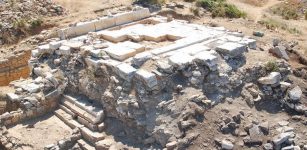 Excavations Begin In Ancient City Of Antiocheia Ad Cragnum, Turkey
Archaeology | Sep 4, 2015
Excavations Begin In Ancient City Of Antiocheia Ad Cragnum, Turkey
Archaeology | Sep 4, 2015 -
 3,000-Year-Old African Musical Instrument Can Help Modern Medicine
Archaeology | Sep 19, 2018
3,000-Year-Old African Musical Instrument Can Help Modern Medicine
Archaeology | Sep 19, 2018 -
 Mystery Of The 1,700-Year-Old ‘Salt’ Mummy With Long White Hair
Featured Stories | Sep 14, 2016
Mystery Of The 1,700-Year-Old ‘Salt’ Mummy With Long White Hair
Featured Stories | Sep 14, 2016 -
 Is There An Ancient Anomaly In Our DNA? It Is Possible, Scientists Say
Featured Stories | Mar 6, 2025
Is There An Ancient Anomaly In Our DNA? It Is Possible, Scientists Say
Featured Stories | Mar 6, 2025 -
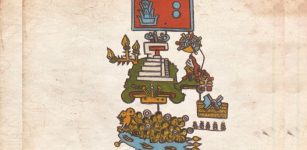 Pictograms: First Written Accounts Of Earthquakes In Pre-Hispanic Mexico
Archaeology | Aug 27, 2021
Pictograms: First Written Accounts Of Earthquakes In Pre-Hispanic Mexico
Archaeology | Aug 27, 2021 -
 Cousin-Marriages Were Uncommon In The Ancient World
Archaeology | Sep 14, 2021
Cousin-Marriages Were Uncommon In The Ancient World
Archaeology | Sep 14, 2021 -
 Mysterious ‘Las Labradas’ Petroglyphs With Roots In The Pre-Columbian Times Of Mexico
Featured Stories | Oct 9, 2020
Mysterious ‘Las Labradas’ Petroglyphs With Roots In The Pre-Columbian Times Of Mexico
Featured Stories | Oct 9, 2020 -
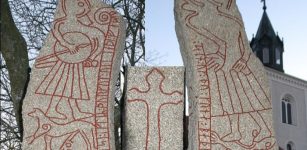 Ledberg Stone (Ledbergsstenen) With Magic Formula Dated To Viking-Era – One Of Most Beautiful Landmarks
Featured Stories | Jan 5, 2023
Ledberg Stone (Ledbergsstenen) With Magic Formula Dated To Viking-Era – One Of Most Beautiful Landmarks
Featured Stories | Jan 5, 2023 -
 Unique 8,000 Year-Old Child Burial Reveals Its Secrets
Archaeology | Nov 3, 2020
Unique 8,000 Year-Old Child Burial Reveals Its Secrets
Archaeology | Nov 3, 2020 -
 Eros: Remarkable Greek God And One Of Those Who Created Everything That Exists Today
Featured Stories | Apr 19, 2023
Eros: Remarkable Greek God And One Of Those Who Created Everything That Exists Today
Featured Stories | Apr 19, 2023 -
 Mysterious Black Cloud Caused A Global Catastrophe In 536 A.D. And 18 Months Of Darkness
Featured Stories | May 25, 2021
Mysterious Black Cloud Caused A Global Catastrophe In 536 A.D. And 18 Months Of Darkness
Featured Stories | May 25, 2021 -
 On This Day In History: Battle of Champion Hill Was Crucial Action Of Grant’s Vicksburg Campaign – On May 16, 1863
News | May 16, 2016
On This Day In History: Battle of Champion Hill Was Crucial Action Of Grant’s Vicksburg Campaign – On May 16, 1863
News | May 16, 2016 -
 Mediterranean Hunter-Gatherers Relied On Marine Resources More Than Previously Thought
Archaeology | Feb 22, 2023
Mediterranean Hunter-Gatherers Relied On Marine Resources More Than Previously Thought
Archaeology | Feb 22, 2023 -
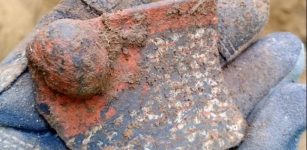 6,000-Year-Old Discovery Of Artifacts Associated With Ancient Lengyel Culture
Archaeology | Mar 27, 2020
6,000-Year-Old Discovery Of Artifacts Associated With Ancient Lengyel Culture
Archaeology | Mar 27, 2020 -
 Ancient Jericho – City Of Giants And Home Of The Mighty Gibborim
Biblical Mysteries | Jun 28, 2017
Ancient Jericho – City Of Giants And Home Of The Mighty Gibborim
Biblical Mysteries | Jun 28, 2017 -
 The Olympics In Ancient And Modern Times – What Has Changed?
Featured Stories | Jun 20, 2019
The Olympics In Ancient And Modern Times – What Has Changed?
Featured Stories | Jun 20, 2019 -
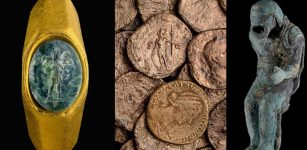 Magnificent Underwater Treasure Recovered From Two Ancient Shipwrecks Off The Coast Of Caesarea
Archaeology | Dec 28, 2021
Magnificent Underwater Treasure Recovered From Two Ancient Shipwrecks Off The Coast Of Caesarea
Archaeology | Dec 28, 2021 -
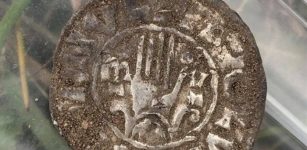 Hoards Of Viking Coins Discovered On The Island Of Saaremaa
Archaeology | Oct 7, 2019
Hoards Of Viking Coins Discovered On The Island Of Saaremaa
Archaeology | Oct 7, 2019 -
 Mayong – Mysterious Ancient Land Of Black Magic In India
Featured Stories | Mar 7, 2019
Mayong – Mysterious Ancient Land Of Black Magic In India
Featured Stories | Mar 7, 2019 -
 Gefjon: Norse Fertility Goddess Who Knew Humans’ Fates, And Plowed Away Part Of Sweden To Give It To Denmark
Featured Stories | Nov 22, 2019
Gefjon: Norse Fertility Goddess Who Knew Humans’ Fates, And Plowed Away Part Of Sweden To Give It To Denmark
Featured Stories | Nov 22, 2019
